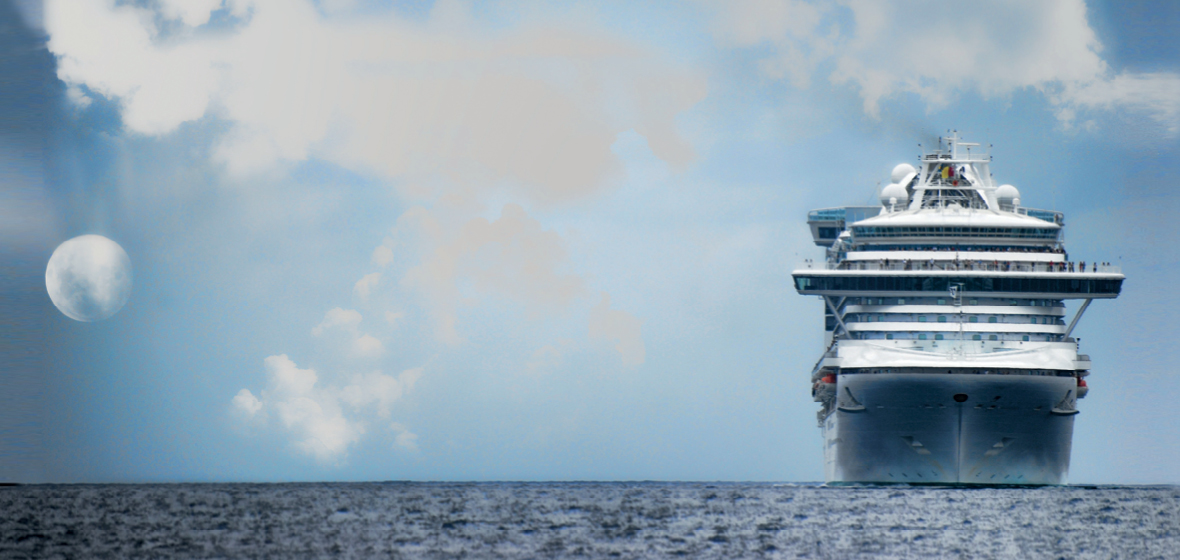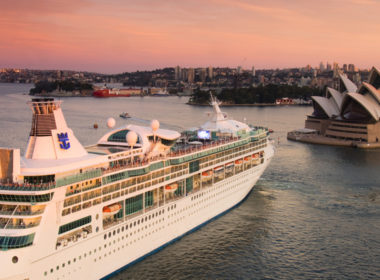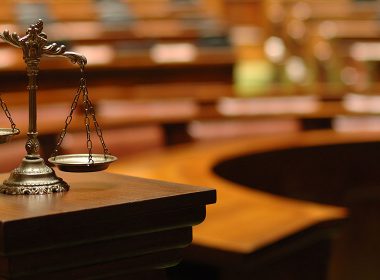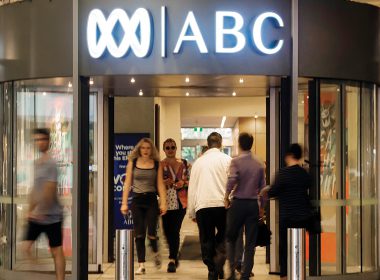Many of the most severe restrictions imposed in the COVID-19 pandemic relate to overseas arrivals and border control. Currently, the most fatal cluster of cases is the Ruby Princess cruise ship, which docked in darkness as the outbreak was taking hold in Australia. In triggering emergency powers, what are our responsibilities to those stranded at sea?
It was the early hours of 19 March when the Ruby Princess came into port at Sydney’s Circular Quay, disembarking more than 2,700 passengers and unwittingly unleashing the deadliest cluster so far of the COVID-19 outbreak on Australian shores.
The revelation of its cover-of-darkness arrival spurred community anger and fear. At the time the passengers – many whom reported feeling unwell – left the ship, NSW residents had already been living with severe social distancing restrictions and disruptions to their daily life. Didn’t the wave of infection flowing from that cruise render much of that citizen effort pointless?
“Cruise ships have always presented a risky business, and respiratory illnesses are often reported,” Tyrone Kirchengast, professor of law at the University of Sydney, tells LSJ.
“At a time when there are very significant restrictions on our liberty, I think we have seen a public frustration that there was a decision made to allow people to continue to enter by marine port.”
In Australia, unprecedented powers granted to government under the Biosecurity Act 2015 (Cth) have worked hand-in-glove with public health orders and the capabilities of state and territory governments.
It is a necessary marriage – imposing travel bans and forcing returning travellers to quarantine appears the most effective way of stopping the coronavirus from spreading en masse, with public health measures including high levels of testing and tracing and isolating close contacts of positive cases then doing its part to stop troublesome community transmission.
Kirchengast says “cooperative federalism” – the unity between federal and state decision making – is now more crucial than ever.
“In the context of the Ruby Princess, some of the issues of cooperative federalism, and who has power over what, become clear,” he says. “Certainly, we have seen the federal government be very fast moving in enacting these powers under federal biosecurity laws.”
The deadly outbreak and bureaucratic nightmare that surrounded the docking of the Ruby Princess is now the subject of a criminal investigation. The cruise cluster, which is believed to have originated from an infected crew member distributing food and drinks, has been responsible for at least 20 deaths and more than 600 cases.
It is estimated that as many as five Commonwealth and state agencies were involved in the debacle, including Australian Border Force, the Federal Department of Agriculture, NSW Health and the NSW Port Authority, as well as the cruise’s operator Carnival Cruises. The finger pointing and blame game is in full flight.
There have been reports of some difficulty in information sharing – often a symptom of siloed government agencies – between federal authorities and the states who then manage returning travellers undertaking forced quarantine. Kirchengast says there is “a degree of uncertainty” and ambiguity as to the transfer of returning passengers from federal responsibility to the states as a public health measure.
“There has been some uncertainty as to who has jurisdiction,” Kirchengast tells LSJ.
“But when it comes to marine ports, customs, biosecurity and quarantine, those are a commonwealth issue.”
A biosecurity emergency
Biosecurity law has faced its toughest challenge when it comes to decision-making regarding cruises, where outbreaks of the virus have spread with breakneck speed and ferocity.
Holidaymakers in far flung corners of the world, from Uruguay to Japan, found themselves facing weeks aboard as the passenger infection rate soared. For weeks, the Diamond Princess cruise, moored in the Japanese port city of Yokohama, was given its own title and ranking near the top of the global list of COVID-19 cases, with more than 700 confirmed infections.
While the closing of borders across the globe – first done in Australia on 1 February with the banning of all incoming travel from China, the coronavirus’ country of origin – was initially met with caution by the World Health Organization (WHO), which did not endorse it as a measure to halt the virus in its tracks, Australia and New Zealand’s success in “flattening the curve” and slowing the spread demonstrates its effectiveness.
Both Australia and New Zealand declared emergencies under their own Biosecurity Acts when their patient numbers were low, granting extraordinary powers to authorities in a race to slow the virus in its tracks.
In Australia, this included making the powers available to the Health Minister, Greg Hunt, under the Biosecurity Act 2015 (Cth) a form of “Henry VIII provision”, which is delegated legislation that prevails over primary legislation.
In January, when less than five positive cases of COVID-19 had been recorded in Australia, such draconian orders seemed unfathomable. Now the rules – like ordering an individual to remain under guard inside a hotel room for two weeks upon arrival in the country, or forcing them to provide government authorities with their health status and remain in their place of residence for a specified time or face criminal charges – are embedded in daily life.
New Zealand Prime Minister Jacinda Ardern introduced the lockdown when the nation of just under five million people had about 200 confirmed or probable cases. The country also took steps to ban international flights, all cruise ship entries until at least 30 June, and two-week quarantine requirements for all returning residents days before other nations followed suit.
“We don’t want to be Italy … we are asking [New Zealanders] to work together, with a little distance between you,” Ardern said.
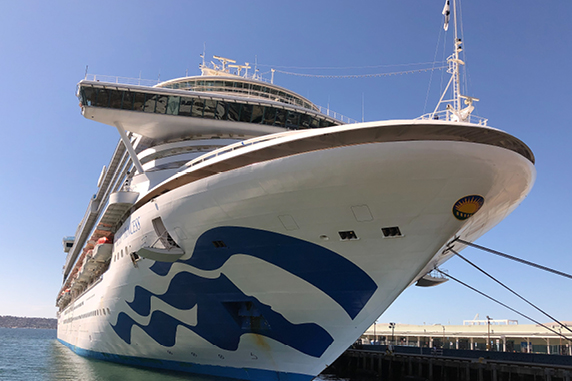
The Ruby Princess affair
On 15 March, the Morrison government announced ports would close for at least 30 days. The Ruby Princess, at that stage in Wellington, set sail for Sydney, some of its passengers reportedly already feeling unwell.
More than a month after its arrival in Sydney, at the time of press, the ship remains docked at Port Kembla, south of Sydney. Its crew members, hailing from almost 50 different countries, are confined to individual small rooms and their departure date remains uncertain.
Donald Rothwell, professor of international law at the Australian National University and expert in maritime law, explains to LSJ, “if a vessel is granted pratique, it is allowed to come into port to dock”.
The principle of pratique sits within the Biosecurity Act 2015 (Cth) and regulates when ships are allowed to come into port, once any risk to human health has been identified and managed before anyone disembarks. Non-commercial vessels do not have pratique until a biosecurity officer has assessed there is no risk to human health on board, and all vessels arriving in Australia must complete a pre-arrival report before clearance can be granted.
A spokesman for Carnival Cruises said the ship had complied with all domestic and international public health recommendations, and that a COVID-19 swab conducted on board before it left Sydney on 8 March had returned a negative result. The unwell passengers who had been on the previous cruise and swabbed for the virus also tested negative.
NSW Health Minister Brad Hazzard has pointedly said the cruise company should not have given the ship the green light to leave Sydney, arguing it had “weeks of evidence” and global warnings, as well as the case study of the Diamond Princess, demonstrating that such journeys were risking rampant outbreaks of infection. WHO has declared the coronavirus a pandemic on 11 March, three days after the cruise’s departure.
“Every day that cruise continued around New Zealand and in international waters has obviously had extremely unfortunate opportunities for the virus to spread,” Hazzard said on 14 April.
In addition to the police investigation, the issue of how the cruiseliner handled the issue of passengers feeling unwell will also be considered by a special commission of inquiry announced by NSW Premier Gladys Berejiklian.
Rothwell also believes some of the criticism directed at passengers is unwarranted.
“We have to consider the capacity of the cruise ships to be able to determine if someone had COVID-19,” he says.
“We need to be cautious in jumping to conclusions about criticising passengers on the cruise for not presenting themselves to sick bay, especially when they were only 24 or 36 hours away from port.
“At most, the medical centres on board any cruise ship can only rely on passengers with flu symptoms self-reporting and presenting themselves for testing.
“Under the principle of pratique, the cruise ship has responsibility to indicate that they are confident all passengers have a clean bill of health.”
Rothwell welcomes the decision to conduct a special commission of inquiry, which will be led by Bret Walker SC.
“I think the inquiry will bring some clarity,” he tells LSJ.
An international duty
Rothwell says the unfolding situation has been an intersection of law of the sea principles, maritime law, the Biosecurity Act 2015 (Cth), and state public health orders.
Foreign-flagged cruise ships can remain 12 nautical miles off the coast, exercising their right of innocent passage, providing they are not posing any risk to that country – for example by discharging large amounts of oil, as they anticipate coming into port or berthing.
Rothwell says they cannot anchor without “a reasonable prospect” of docking, and can be forced to leave Australian waters, but enforcing that law of the sea in the current climate would be poor “optics” for the federal government.
“I think they would be loath to deploy that sort of measure,” he says.
Australia also has obligations under WHO regulations published in 2005 to provide health and medical assistance and facilities to aircraft and ships that enter our airports, harbours and ports, to assist with dealing with outbreaks of disease to passengers and crew.
“Clearly, the situation being faced [when dealing with] cruise ships is unprecedented,” Rothwell tells LSJ.
“There really is no instance since the Second World War where ports have closed simultaneously, with so many people out to sea. There was then very little time to consider how we repatriate citizens who are currently on cruise ships around the world.”
Rothwell believes the government has done “a good job” in helping Australians stranded overseas to come home, but says authorities must remember that we owe the same assistance to other counties in helping their citizens, who remain on board the ships as crew staff.
He says the issue could become more complex when considering what to do with workers attached to merchant ships.
“For the crew on merchant ships, their home is that ship,” he says.
“With merchant ships, we are not talking about the numbers that come off cruise ships, the scale is vastly different. Compared to thousands [on cruise ships] there might only be 20 or 30 crew members.
“But for merchant ships coming from China, Japan or Singapore, for example, they are still at sea for a number of days and even if they are well when they depart, who knows what their condition is when they arrive?
“One important aspect of the inquiry will be how quickly we can apply any lessons learned [about cruise ships] and apply to the issue of merchant ships that will continue to come into ports in Sydney. Using the principle of pratique [as a basis] there are immediate lessons here that could be placed into operation very quickly.”
On 15 April, the Commonwealth Government settled a case brought against it by tour company APT, after Health Minister Greg Hunt had ordered all foreign-registered cruise ships leave Australian waters immediately, using powers granted to him under federal biosecurity laws, “as soon as it is reasonably practical”.
At the time of launching legal action in the Federal Court, APT had only crew members remaining on board cruise ship Caledonian Sky, a Bahamas-registered vessel moored in Darwin.
Judge Angus Stewart noted that the matter, and the application brought by APT, “potentially affects all foreign cruise vessels in Australian territory, and not only the particular vessel affected directly by this case”.
“Right now, we are dealing with a humanitarian situation with those persons who are still on board these ships,” Rothwell says. “It will come down to governments having to do deals to help each other out.”

